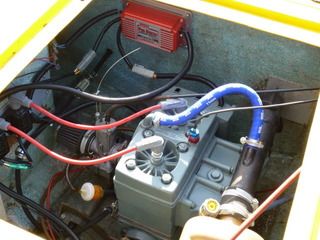The image below shows the shaft assembly for the UA jet unit. The item below is actually my spare unit which I didn't want to use as the rear bearing arrangement is different (bronze bearing) and the impeller blades were in worse condition than the current unit.
The thrust bearing is removed by removing the sleeve from the front of the shaft. This is located by a small grub screw. The allen key head was rusted out so this was drilled out. The sleeve then slides off. The thrust bearing can then be pulled off with a flywheel puller.
The thrust bearing is a simple bronze casting with a sealed ball bearing retained by a large circlip. The bearing is sealed by 2 small oil seals at the rear of the bronze housing and one larger oil seal at the front of the housing. To remove the bearing the large oil seal is removed first. This was being replaced so it didn't matter if I damaged it whilst pulling it out. The circlip can then be removed using circlip pliers. The bearing must be pressed out, and cannot be pushed out by hand. I used the flywheel puller to do this.
Once the thrust bearing is out, the 2 smaller oil seals can be easily removed. All the seals were in bad condition and in need of replacement. I would suggest replacing the oil seals if in doubt as otherwise water and grit can destroy the thrust bearing.
- Thrust bearing 63022RS
- Small oil seal OS125075025
- Large oil seal OS422507
The rear bushing which supports the tail of the shaft is a marginally lubricated cylindrical bushing. The bushing is sealed by a further oil seal. This seal was also replaced. Again this part is available from Nationwide Bearings, Part Number OS352507.
The jet pump housing was known to be in good condition as I had stripped it down before. Nevertheless, it had clearly seen some salt water use as there was some corrosion present. To prolong its life I decided to get the unit powdercoated. While doing this I also stripped down my spare unit and had this sandblasted to get an idea of its condition.
Before powdercoating I had the stator section machined to incorporate an alignment recess (see image below). This was a feature of my spare unit and allowed the partially protruding nozzle section wear ring to slot into the stator section of the jet unit, thus aligning the two sections of the jet unit along the centreline of the shaft. Aligning the two sections is otherwise a matter of trial and error and is the most frustrating part of fitting the jet unit to the boat.
The unit was powdercoated by RPA http://www.bristolmotorcyclepowdercoating.co.uk/index.html who did a great job of the old casting. It had to be heated (gassed) twice to get the trapped gas out of the porous casting before powdercoating. They then applied a primer coat followed by the gloss black final coat as recommended for marine applications. All the bearing surfaces and thread holes were masked off beforehand. The final coating is hard as rock, looks excellent, and should last a long time.
During the powdercoating process, the rear bushing for the shaft got damaged by the heating process. The bearing is of the marginally lubricated type (bronze outer with plastic inner). The plastic bearing surface was melted by the heat so I had to remove the damaged bearing and order a new one (these are available from Ondrives http://www.ondrives.com/index.php Length 25mm, Diameter 25mm, Part Number: PM-2525-DX). The new bearing is pressed into the rear housing (nozzle section).
To improve the performance of the boat, the main repair to the jet unit was to get the shaft straight. This had been straightened before but not enough, resulting in a small eccentricity which prevented the tip clearance between the impeller tips and the wear rings from being the correct dimension. The eccentricity also caused the impellers to contact the wear rings occasionally which could be felt through the boat at certain speeds. I took the dimensions of the original shaft and had a new one made up by Hamble Props http://www.hamblepropellers.com/. The new shaft is made from ultra strong Duplex Stainless Steel and has a slightly increased diameter to further improve strength. The impeller blades were bent in several places and Hamble Props were able to straighten these out to the original shape.
New wear rings were made up from ABS plastic to match the impeller diameter by Plastic Machining Services, Telford http://www.plasticmachiningservices.co.uk/. A tip clearance of 0.2mm was specified. Any further tip clearance reduction was considered to provide insufficient clearance for the natural vibration and flexing of the shaft. The wear rings were pressed into the housings and are held in place through an interference fit.




















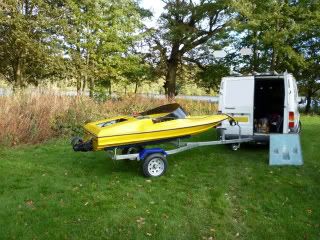
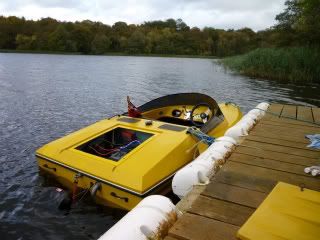


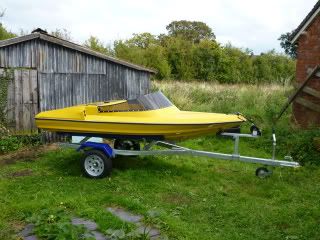
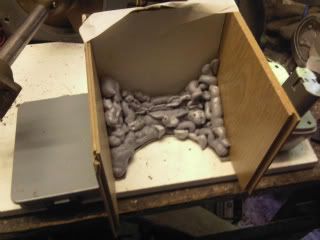
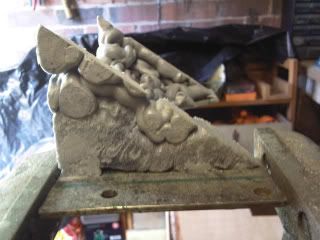
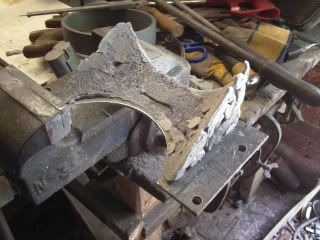
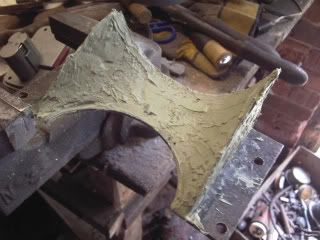
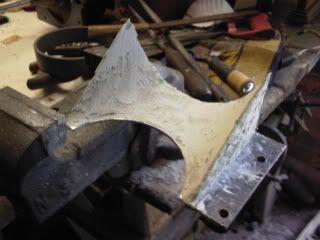 Smoothing out the filler. Starting to take shape
Smoothing out the filler. Starting to take shape 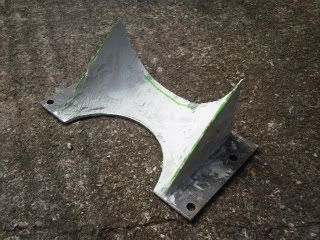
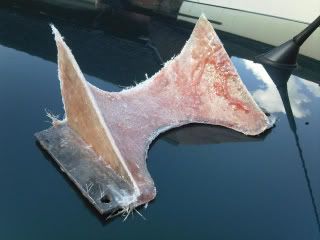
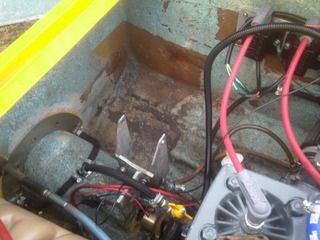
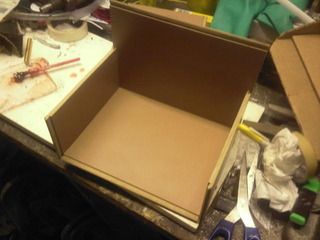

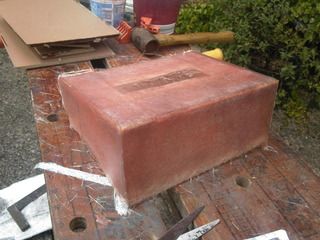
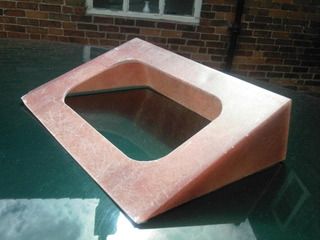
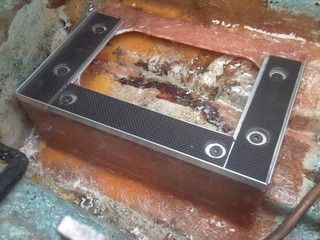
 Battery in position - just needs proper clamp to hold it in place now
Battery in position - just needs proper clamp to hold it in place now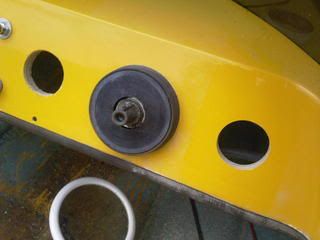



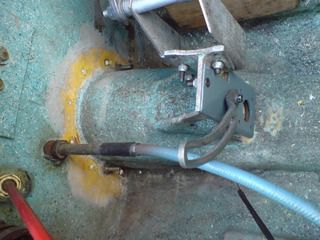
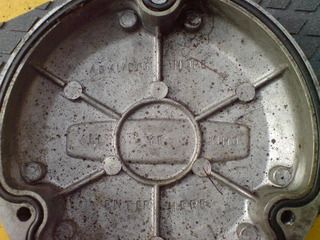
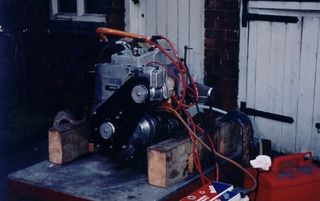
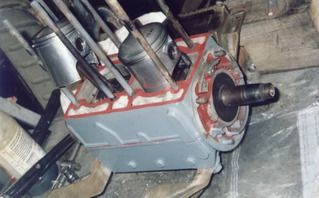
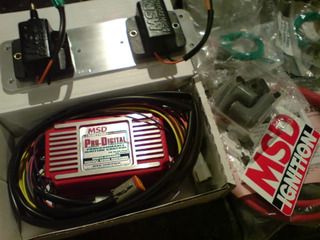
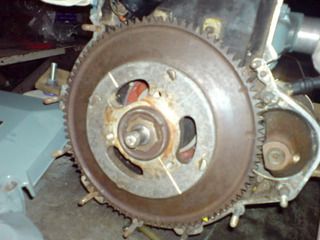
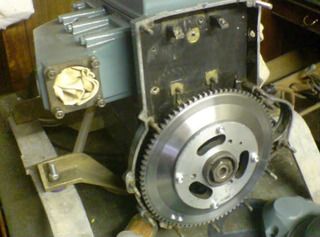 Rebuilt engine with custom made flywheel following "Easy Start" disaster. A magnetic trigger is installed on the rear face of the flywheel to trigger the ignition sparks
Rebuilt engine with custom made flywheel following "Easy Start" disaster. A magnetic trigger is installed on the rear face of the flywheel to trigger the ignition sparks 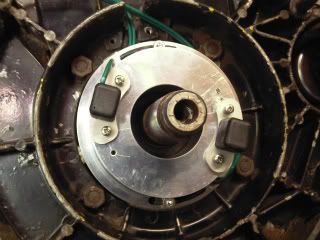 Custom made trigger pickup mounting plate and twin trigger pickups. These control the twin coil packs
Custom made trigger pickup mounting plate and twin trigger pickups. These control the twin coil packs With new exhaust header and ignition cover (from a Kawasaki)
With new exhaust header and ignition cover (from a Kawasaki)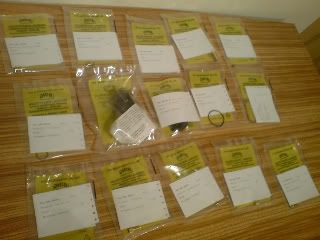 New parts from BING carburettors - They have lots of old spares in stock!
New parts from BING carburettors - They have lots of old spares in stock!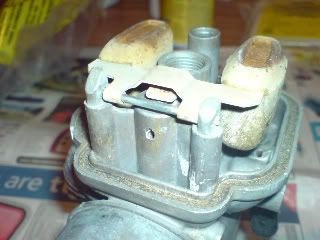
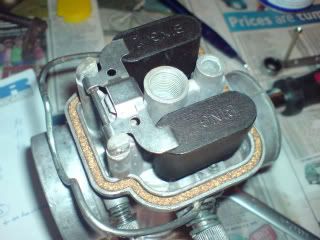 New float being fitted to carb - also fitted new jets, needles, and missing parts!
New float being fitted to carb - also fitted new jets, needles, and missing parts!